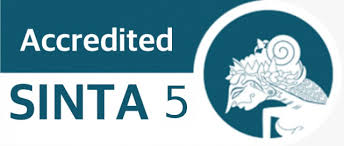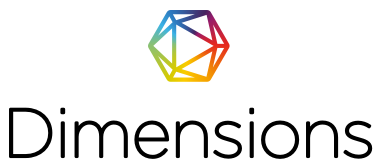Pengaruh Model Pembelajaran Discovery Berbantuan Aplikasi Photomath Terhadap Self Efficacy Matematis Siswa MA
DOI:
https://doi.org/10.47662/farabi.v8i1.867Kata Kunci:
Discovery, Photomath, Mathematical Self EfficacyAbstrak
This study aims to find out whether there is an influence of the Discovery learning model assisted by the Photomath application on the Self Efficacy of Mathematics for students in class X MA. The research was conducted at MAS Al-Washliyah Johor Gedung Medan, carried out in class X in the even semester of the 2023/2024 school year using a quasi-experimental method with a pretest-posttest non-equivalent control group design. The population in this study is class X which totals 76 students. The sample in this study was taken by Simple Random Sampling. Where class X-A with a total of 38 students is an experimental class and class X-B with a total of 38 students is a control class. Data collection techniques use questionnaires (before and after). Data analysis techniques are normality test, homogeneity test and Independent Sample t-Test. Based on the research results, it can be concluded that there is an influence of the Discovery learning model assisted by the Photomath application on the Mathematical Self Efficacy of class p<0.05 then is accepted and is rejected. And based on the calculation results with df = 76 – 2 and a significance level of 0.025, it is found that ± is 1.995 and is 6.313. Because >, which is 6.313 > 1.995, then is accepted and is rejected. This can also be seen and proven from the average Self Efficacy questionnaire results of students who used the Discovery learning model assisted by the Photomath application, namely 77,08 (before) and 90,08 (after) while students who used Scientific learning assisted by the Photomath application were 78,39 (before) and 79,63 (after) students who used the Photomath-assisted Discovery learning model had a higher average score of the questionnaire data after treatment than students who used Photomath-assisted Scientific learning.
Referensi
Abu Hassan, S. A., Suzana Binti Zainol Abidin, & Z. B. H. (2021). Keberkesanan Pembelajaran Dan Pengajaran Dalam Talian (Epembelajaran) Terhadap Pembelajaran Pelajar Di Kolej Komuniti Hulu Langat. International Journal of Humanities Technology and Civilization, 6(2),1–8.
Afifah, S. N., & Kusuma, A. B. (2021). Pentingnya kemampuan self-efficacy matematis serta berpikir kritis pada pembelajaran daring matematika. JURNAL MathEdu (Mathematic Education Journal), 4(2), 313–320.
Avanda, A. Y. (2020). Eksistensi Aplikasi Photomath dalam Pembelajaran Matematika pada Siswa Sekolah Menengah Atas (SMA). Prosiding Pendidikan Matematika Dan Matematika Yogyakarta: Universitas Negeri Yogyakarta, 2(1), 1–8.
Dewi, M. W. K., & Nuraeni, R. (2022). Kemampuan komunikasi matematis siswa SMP ditinjau dari self-efficacy pada materi perbandingan di desa karangpawitan. Plusminus: Jurnal Pendidikan Matematika, 2(1), 151–164.
Farhana, S., Amaliyah, A., Safitri, A., & Anggraeni, R. (2022). Analisis Persiapan Guru dalam Pembelajaran Media Manipulatif Matematika di Sekolah Dasar. Educenter: Jurnal Ilmiah Pendidikan, 1(12), 892–896.
Herita, M. S. (2022). Penerapan Model Pembelajaran Discovery Learning Pada Materi Laju Reaksi Untuk Meningkatkan Hasil Belajar Peserta Didik. Jurnal Kinerja Kependidikan (JKK): Facilities of Educator Career and Educational Scientific Information, 4(1), 109–130.
Marwiyah, K. W. W. (2024). Implementasi Model Discovery Learning melalui Pembelajaran Berdiferensiasi untuk Meningkatkan Kolaborasi Pelajaran Matematika Kelas 1 SD. Jurnal Farabi, 7(2), 140–151.
Muhammad, I., & Juandi, D. (2023). Model Discovery Learning Pada Pembelajaran Matematika Sekolah Menengah Pertama: A Bibliometric Review. EULER: Jurnal Ilmiah Matematika, Sains Dan Teknologi, 11(1), 74–88.
Mukhid, A. (2021). Metodologi Penelitian Pendekatan Kuantitatif. Penelitian Kuantitatif Dan Kualitatif, November, 1–13.
Navianto, A. (2023). Upaya Meningkatkan Hasil Belajar Bangun Ruang Sisi Lengkung Melalui Pembelajaran Kooperatif Bermakna Menggunakan Benda Nyata. Prismatika: Jurnal Pendidikan Dan Riset Matematika, 5(2), 221–232.
Ningsih, W. F., & Hayati, I. R. (2020). Dampak Efikasi Diri Terhadap Proses & Hasil Belajar Matematika (The Impact Of Self-Efficacy On Mathematics Learning Processes and Outcomes). Journal on Teacher Education, 1(2), 26–32. https://doi.org/10.31004/jote.v1i2.514
Rahim, R., Rizqi, N. R., & Maharani, I. (2024). Pengaruh Model Pembelajaran Make A Match Terhadap Kemampuan Matematika Siswa MIS Nurul Hidayah Medan. Jurnal Pembelajaran dan Matematika Sigma (JPMS), 10(1), 14–18.
Ria Nur Fitriani, & Heni Pujiastuti. (2021). Pengaruh Self-Efficacy Terhadap Hasil Belajar Matematika. Jurnal Cendekia: Jurnal Pendidikan Matematika, 05(03), 2793–2801.
Rizqi, N. R., Saragih, S., Napitupulu, E. E., & Maharani, I. (2023). Keterampilan Berpikir Kritis Matematis Berbasis Budaya Melayu Deli Melalui Model Problem Based Learning. PRISMA, 12(2), 466–474.
Sary, R. F., Juandi, D., & Jupri, A. (2022). Model Pembelajaran Discovery Learning dan Kemampuan Penalaran Matematis. AKSIOMA: Jurnal Program Studi Pendidikan Matematika, 11(2), 1028.
Saundarajan, K., Osman, S., Kumar, J., Daud, M., Abu, M., & Pairan, M. (2020). Learning Algebra Using Augmented Reality: A
Preliminary Investigation On The Application Of Photomath for Lower Secondary Education. International Journal of Emerging Technologies in Learning (IJET), 15(16), 123–133.
Yetri, O., Fauzan, A., Desyandri, D., Fitria, Y., & Fahrudin, F. (2019). Pengaruh Pendekatan Realistic Mathematics Education (Rme) Dan Self Efficacy Terhadap Kemampuan Pemecahan Masalah Matematis Siswa Di Sekolah Dasar. Jurnal Basicedu, 3(4), 2000–2008. https://doi.org/10.31004/basicedu.v3i4.29
Zain, I. N., Setambah, M. A., Othman, M. S., & Hanapi, M. H. (2023). Use of Photomath Applications in Helping Improving Students’ Mathematical (Algebra) Achievement. European Journal of Education and Pedagogy, 4(2), 85–87.
Unduhan
Diterbitkan
Cara Mengutip
Terbitan
Bagian
Lisensi
Hak Cipta (c) 2025 Najwah Rokan, Israq Maharani, Ulfa Annisa Lubis

Artikel ini berlisensiCreative Commons Attribution-ShareAlike 4.0 International License.







